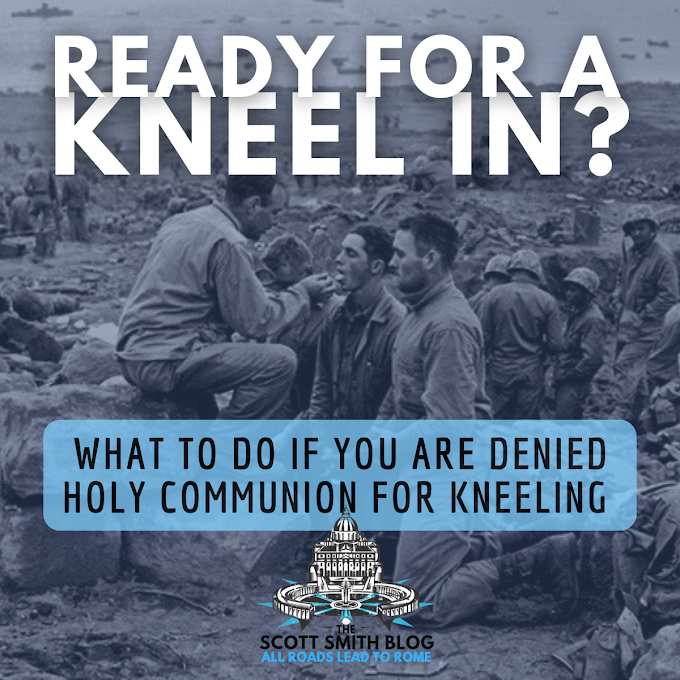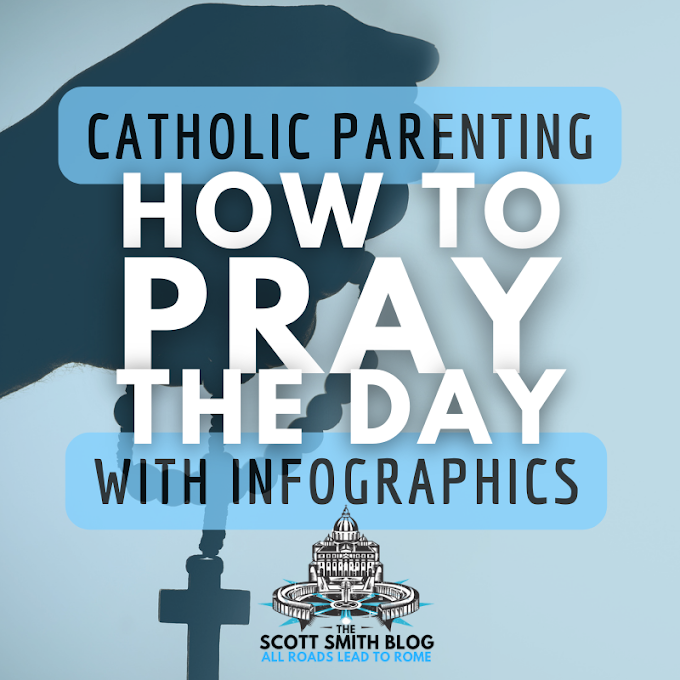In this post you will learn
You can't win, Darth. If you strike me down, I shall become more powerful than you could possibly imagine.
- Obi-Wan Kenobi, Episode IV: A New Hope)
Interested in the Theology of Isaac Asimov? How about the Theology of all the Sci-Fi in the Galaxy? I have written the following book to cover exactly that. The Theology of Sci-Fi covers Star Wars, Dune, Asimov's Foundation Series, The Matrix, Superman, and the classics of science of fiction:


In a very similar way, though much more demure, St. Therese of Lisieux addresses her own approaching death: "I want to spend my heaven in doing good on earth."[1]
St. Therese is a fine and powerful example of the Communion of Saints.
The Communion of Saints' action in this world is similar to Obi-Wan Kenobi's helping Luke Skywalker, following his journey from the Jedi netherworld.
Also, there's another reference in Episode 9: The Rise of Skywalker. Luke tells Rey: "One thousand generations are now with you." Find out what that could mean ...
How does Obi-Wan come back from the dead after Darth Vader kills him?
Let's cover a little background. Yoda and Qui-Gon Jinn answer this question at the end of Episode III: Revenge of the Sith.At the end of Episode III, George Lucas does a lot of connecting the dots for us; for example:
- We're shown how Leia becomes an Organa and Crown Pincess of Alderaan.
- We see the construction of the first Death Star with a cameo from a young, beefy Grand Moff Tarkin.
- We find out why Obi-Wan and Yoda go into exile, to Tatooine and Dagobah, respectively, to learn Qui-Gon's new trick.
What's Qui-Gon's new trick?
First off, Qui-Gon is Obi-Wan's old Jedi Master. We find out at the end of Revenge of the Sith that Qui-Gon has "returned from the netherworld of the Force" and is ready to teach Yoda and Obi-Wan the same.It seems Yoda had a conversation with Qui-Gon's spirit in much the same way that Obi-Wan will later aid Luke.
On a side note, the book adaptation of Revenge of the Sith includes more details about Yoda and Qui-Gon's conversation. Yoda regrets harboring doubts of Qui-Gon's abilities, saying "A great Jedi Master you always were, but too blind I was to see it ... Your apprentice, I gratefully become."
This is a Hebrew conception of the afterlife similar to Hades in Greek mythology, a gloomy place of shadows. Sheol is a place awaiting the Resurrection of Christ.
Use of the word "Netherworld" and a lack of a true resurrection lead me to this Sheol connection. Sheol is sometimes translated as "netherworld" and the two words are at least regarded as synonyms.
Also, the Messianic figure of Anakin Skywalker does not possess the power to resurrect his own life, though he very much sought this power credited to Darth Plagueis, as I've described in my post, The Virgin Birth of Star Wars.
Following his resurrection, Christ walked the earth as a glorified body; Anakin's resuscitated body, dependent on mechanical parts to keep him alive, is very different from this. Very different, as Saint Obi-Wan describes in Return of the Jedi:
It is such a contrast that it almost seems intentional. The resuscitation of Vader seems like the opposite of a resurrection.
Of course, Vader’s mechanical resuscitation is also a very different process than Jedi returning from the Netherworld of the Force. The difference between a Force Ghost and Jesus’ resurrected body is also pretty clear: Jesus is both body and soul.
The comparison between Force Ghosts and apparitions of the Saints is much closer.
The argument could be made, also, that Qui-Gon's first re-turn from the Netherworld and later instruction to other Jedi is similar to Jesus leading his disciples to the Resurrection. Not only is Jesus a teacher, he is the Resurrection, itself, and life (cf. Jn 11:25).
The Buddhist concept of the Bodhisattva may have also inspired Qui-Gon’s return to guide others back from the Jedi Netherworld.
Cardinal Ratzinger, later Pope Benedict XVI, reflects on how Christ, as well as the saints through Christ, fulfills the myth of the Bodhisattva:
There is a critical difference between the Jedi Force Ghosts and the Saints, however. The direction is different. The main idea behind the Force Ghosts seems to be helping deceased Jedi return to the living. The purpose of this return is not to help the living to the Star Wars equivalent of heaven but to defeat the Sith.
Nevertheless, there is a strong resemblance between Force Ghosts and the Saints when it comes to their intercessional power. Both return to the living to help them defeat evil.
[2] Ratzinger, Joseph, Eschatology: Death and Eternal Life, CUA Press (2007): 188.
Dead Jedi and Saints
When a Jedi dies, he or she is not truly dead. They are alive in the Force, in the Netherworld of the Force. So it is with Saints. Christians live beyond death. They are alive in Christ. All baptized Christians form one, united body of Christ: the communion of saints.Paragraph 2683 of The Catechism of the Catholic Church explains this. The witnesses who have entered the kingdom of heaven before us (cf. Heb 12:1), especially those that the Church has recognized as saints, "share in the living tradition of prayer by the example of their lives, the transmission of their writings, and their prayer today."
The Saints take care of those members of the communion who remain on earth, being "put in charge of many things" (cf. Mt 25:21). Refer, also, to the quote from Saint Therese at the beginning of this article.
Just as Saints help those who remain on earth build up the kingdom of heaven, Obi-Wan helps Luke destroy the Death Star, directs him to Yoda in Dagobah, and helps him discern his ultimate battle with his father.
With parting words similar to Obi-Wan (and St. Therese), St. Dominic instructed his brothers, "Do not weep, for I shall be more useful to you after my death and I shall help you then more effectively than during my life."
The Saints take care of those members of the communion who remain on earth, being "put in charge of many things" (cf. Mt 25:21). Refer, also, to the quote from Saint Therese at the beginning of this article.
Just as Saints help those who remain on earth build up the kingdom of heaven, Obi-Wan helps Luke destroy the Death Star, directs him to Yoda in Dagobah, and helps him discern his ultimate battle with his father.
With parting words similar to Obi-Wan (and St. Therese), St. Dominic instructed his brothers, "Do not weep, for I shall be more useful to you after my death and I shall help you then more effectively than during my life."
Sidenote on Sheol: Should we compare the Jedi Netherworld to Heaven?
No. I think the Netherworld compares better to Sheol (cf. Job 7:9; Ps 18:5-7, 86:13, 139:8; Jonah 2:2). Sheol is a twilight sort of place, the destination of both the righteous and unrighteous.This is a Hebrew conception of the afterlife similar to Hades in Greek mythology, a gloomy place of shadows. Sheol is a place awaiting the Resurrection of Christ.
Use of the word "Netherworld" and a lack of a true resurrection lead me to this Sheol connection. Sheol is sometimes translated as "netherworld" and the two words are at least regarded as synonyms.
Also, the Messianic figure of Anakin Skywalker does not possess the power to resurrect his own life, though he very much sought this power credited to Darth Plagueis, as I've described in my post, The Virgin Birth of Star Wars.
Following his resurrection, Christ walked the earth as a glorified body; Anakin's resuscitated body, dependent on mechanical parts to keep him alive, is very different from this. Very different, as Saint Obi-Wan describes in Return of the Jedi:
"He's more machine now than man; twisted and evil."
It is such a contrast that it almost seems intentional. The resuscitation of Vader seems like the opposite of a resurrection.
Of course, Vader’s mechanical resuscitation is also a very different process than Jedi returning from the Netherworld of the Force. The difference between a Force Ghost and Jesus’ resurrected body is also pretty clear: Jesus is both body and soul.
The comparison between Force Ghosts and apparitions of the Saints is much closer.
The argument could be made, also, that Qui-Gon's first re-turn from the Netherworld and later instruction to other Jedi is similar to Jesus leading his disciples to the Resurrection. Not only is Jesus a teacher, he is the Resurrection, itself, and life (cf. Jn 11:25).
The Buddhist concept of the Bodhisattva may have also inspired Qui-Gon’s return to guide others back from the Jedi Netherworld.
Cardinal Ratzinger, later Pope Benedict XVI, reflects on how Christ, as well as the saints through Christ, fulfills the myth of the Bodhisattva:
The nature of love is always to be “for” someone. Love cannot, then, close itself against others or be without them so long as time, and with it suffering, is real. No one has formulated this insight more finely than Therese of Lisieux with her idea of heaven as the showering down of love towards all. But even in ordinary human terms we can say, How could a mother be completely and unreservedly happy so long as one of her children is suffering? And here we can point once again to Buddhism, with its idea of the Bodhisattva, who refuses to enter Nirvana so long as one human being remains in hell. By such waiting, he empties hell, accepting the salvation which is his due only when hell has become uninhabited. Behind this impressive notion of Asian religiosity, the Christian sees the true Bodhisvatta, Christ, in whom Asia’s dream became true. The dream is fulfilled in the God who descended from heaven into hell, because a heaven above an earth which is hell would be no heaven at all.[2]
There is a critical difference between the Jedi Force Ghosts and the Saints, however. The direction is different. The main idea behind the Force Ghosts seems to be helping deceased Jedi return to the living. The purpose of this return is not to help the living to the Star Wars equivalent of heaven but to defeat the Sith.
Nevertheless, there is a strong resemblance between Force Ghosts and the Saints when it comes to their intercessional power. Both return to the living to help them defeat evil.
Star Wars, Jedi, Communion of Saints Footnotes:
[1] St. Therese of Lisieux, The Final Conversations, tr. John Clarke (Washington: ICS, 1977), 102.[2] Ratzinger, Joseph, Eschatology: Death and Eternal Life, CUA Press (2007): 188.

















6 Comments
www.prime1-marco.blogspot.com
As Lucas himself once revealed, the Star Wars mythology, at least its spiritual and moral mythology, is heavily influenced by both Christianity and Buddhism.